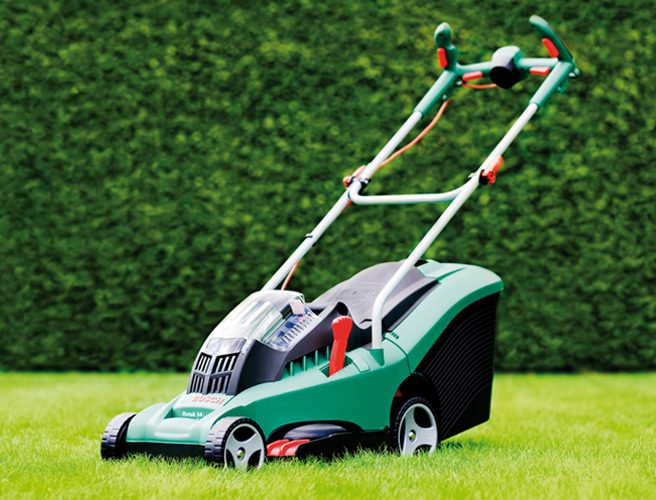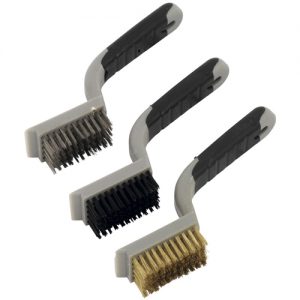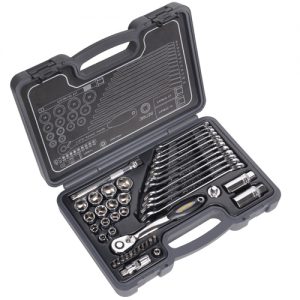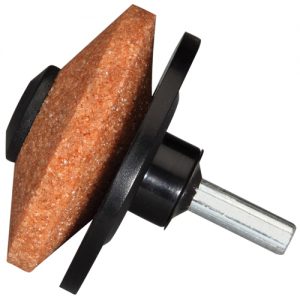Cordless Lawnmower Maintenance

One of the primary advantages afforded by high powered lithium ion battery mowers is that they offer a convenient and low maintenance alternative to their petrol counterparts. On the whole, battery mowers can be used and stored without complication, but to keep them performing at their best, there are a few general maintenance considerations which we will go over here.
Battery Care
Your cordless lawnmower more than likely runs on lithium ion batteries if it was bought in the last few years, and these offer a number of user friendly advantages over previous battery technologies. However, there are a few guidelines to storing and charging lithium ion batteries that can help improve their performance and lifetime. Firstly, they are sensitive to extremes of temperature, and especially heat. Storing or charging a battery in temperatures above 30°C can damage the cells, while extremes of cold will usually result in a temporary drop in performance. Secondly, they can be adversely affected if left for long periods at either extreme of the charge scale (ie fully charged or fully depleted); particularly if you only use your batteries for a few months a year, it is a good idea to store them at room temperature and try to maintain approximately 50% charge while they are not being used (as lithium ion loses its charge quite slowly this is luckily quite easy to achieve). Keeping your batteries indoors and out of hot sheds and greenhouses is a good way to prolong their life; refer to your user manual for more specifics about your batteries and charger’s optimum operating conditions.
Cleaning

During use, fresh grass clippings become plastered onto the underside of the cutting deck, the wheels and the blade mechanism. If left over time, this grass breaks down and rots, causing potential damage to exposed metal, as well as clogging up mechanical parts, grass chutes and air inlets. Therefore it is a good idea to clean the underside of your mower after every use, and especially if you are about to store it for the winter months. For safety, you should always disconnect any batteries from the machine before turning it over – this ensures there is no chance the exposed blades can become activated. Wearing a good pair of protective gloves, clear off any grass and accumulated grime – a rag or towel combined with a soft hand brush should prove successful in dislodging most of this, while a plastic spatula or similar tool may prove useful for scraping off caked on debris. Wipe off any moisture on metal components with a dry towel to prevent corrosion, and give the topside of the mower a cleaning if necessary as well.
Regularly emptying the collection box and cleaning out the grass chute will help improve efficiency; also remember to empty any residual grass out at the end of the mowing season.
Lubricating
Oiling the moving parts of your mower will help ensure they stay moving for longer, safeguarding against seizure and corrosion when stored for longer periods.
Nuts & Bolts

Over time, vibrations from the motor and terrain can work loose fasteners on your lawnmower and you should check over these periodically to make sure everything is securely affixed. A socket or spanner set will help ensure you can tighten any loose nuts, and if any parts have become dislodged and lost you should replace them before use. Check the wheels for wear and damage, and ensure the blade and handles are securely fixed in place.
Rust Treatment
Metal bodied lawnmowers can offer greater durability and impact resistance than plastic alternatives, but are susceptible to rust, especially when stored in their common habitats – sheds and garages, which can often be damp environments. If you have small patches of rust on the deck or chassis, this can usually be sanded or scraped off with sandpaper, a wire brush or power tool with a suitable abrasive accessory, before painting over with a dedicated metal paint (many of which are available with anti-corrosive properties). Surface rust on bare metal components can usually be removed by applying a mild acid such as white vinegar or lemon juice, combined with gentle scrubbing. Spraying with WD40 or a similar compound will help protect against future corrosion.
Sharpening & Replacement
The final main maintenance task on a cordless mower is to ensure it is equipped with a sharp blade for optimum performance. Sharpening a serviceable rotary blade is fairly easy if you have the right tools, or alternatively a variety of dealers and service centres will offer the service for a small fee. However, if it has seen better days you should remove it and install a replacement.

In each case the blade needs to be detached from the machine. As with any time you are working near the blades, you should always isolate the mower from its power source first, and wear suitable gloves to prevent injury. Most rotary blades are removed simply by undoing the nut that holds them in place but bear in mind this may be left threaded (ie you will have to turn it clockwise to loosen it) To prevent the blade from rotating with the nut, it is common practise to clamp a block of wood or a similar obstruction in place.
Sharpening can be achieved with a variety of common tools, including hand files, bench & angle grinders, or dedicated sharpening accessories designed to be mounted in a drill. Instructions on how to achieve this are widely available on the internet, and will be discussed in a future Tooled-up blog post.
In the meantime, good luck with your lawn mowing tasks and enjoy the rest of the summer!
Categories discussed in this article:
